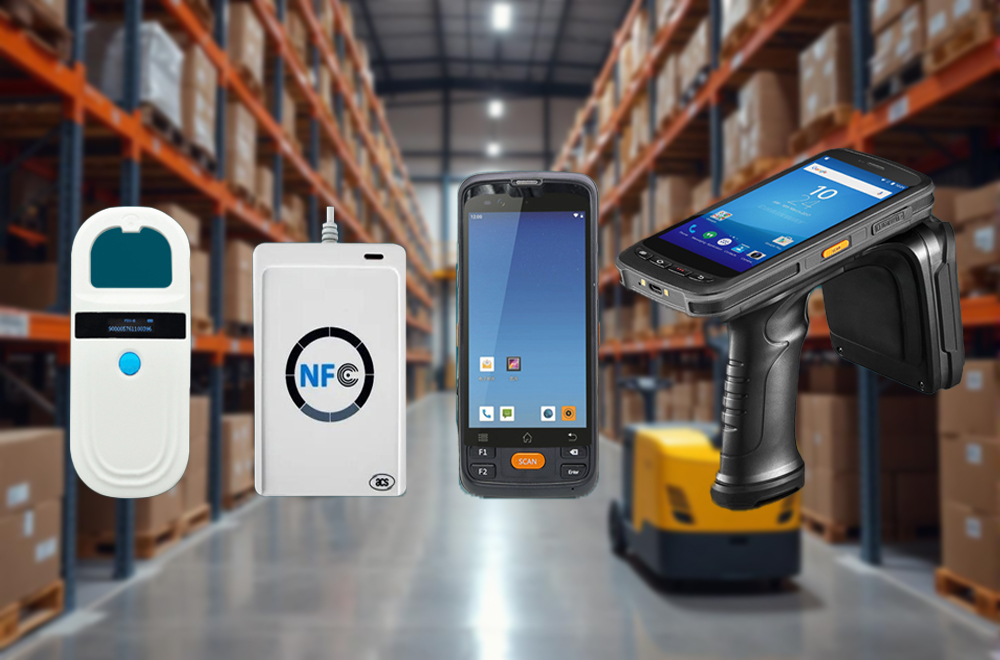With the widespread adoption of RFID technology across industries such as logistics, retail, and healthcare, there is an increasing need to deploy multiple readers within a single environment. This allows for broader coverage and more efficient handling of large numbers of tags. However, when multiple readers operate simultaneously, they may interfere with each other, negatively impacting system stability, efficiency, and data integrity. This article explores the causes of inter-reader interference and presents practical strategies to mitigate its effects, aiming to provide guidance for optimizing RFID system performance in multi-reader environments.
In an RFID system, readers communicate with tags by emitting radio frequency (RF) signals. When multiple readers operate in close proximity or within overlapping coverage areas, their signals can interfere with one another — a phenomenon known as reader-to-reader interference. This results in signal overlap and data conflicts, which can prevent tags from being read accurately or cause errors in data transmission.
This issue is especially prevalent in high-density deployment scenarios such as warehouses, retail stores, and manufacturing facilities. Reader interference leads to increased response times, higher error rates, and reduced overall system performance, ultimately affecting the accuracy and efficiency of business operations.
RFID systems typically operate within specific frequency bands, such as the UHF band. If multiple readers are configured to use the same or adjacent frequencies, signal overlap occurs, leading to mutual interference. In densely deployed environments, the limited availability of frequency channels increases the likelihood of such conflicts.
When readers are placed too close to each other, their signal ranges can overlap significantly, resulting in mutual interference. While proper spatial planning can help reduce this effect, real-world constraints such as facility layout often make it difficult to maintain optimal spacing.
Environmental conditions also play a critical role in RF signal propagation. Materials such as metal and liquid can reflect or absorb radio waves, altering signal paths and potentially causing additional interference. Furthermore, other wireless devices operating on similar frequencies — such as Wi-Fi routers — can further exacerbate the problem.

Dynamic Frequency Selection (DFS): This technique uses intelligent algorithms to detect unused channels and automatically switch readers to less congested frequencies. It is particularly effective in dynamic environments where interference patterns change over time.
Channel Allocation Optimization: Careful planning of reader channel assignments ensures that no two readers operate on the same or adjacent frequencies, minimizing interference. This requires detailed site surveys and customized deployment plans.
Adaptive Transmit Power Adjustment: By adjusting the transmit power based on environmental conditions, unnecessary radiation can be minimized. For example, increasing power in low-signal zones and reducing it in high-signal zones helps maintain communication quality while reducing interference.
Receiver Sensitivity Tuning: Optimizing receiver parameters such as sensitivity and filtering improves a reader’s ability to resist external interference, ensuring stable operation even in complex RF environments.
Physical Isolation Measures: Increasing the distance between readers or using shielding materials can effectively reduce signal overlap. During system design, careful placement of readers should be prioritized to avoid interference-prone configurations.
Directional Antenna Applications: Directional antennas focus signal energy in specific directions, significantly reducing cross-interference between readers. They offer improved signal strength and directional control, making them ideal for high-density deployments.
SDN-Based Coordination Mechanisms: Leveraging SDN enables centralized control and intelligent scheduling of readers. Through a central controller, resources can be dynamically allocated to ensure smooth and interference-free operation among multiple readers.
Cooperative Communication Protocols: Designing protocols that allow readers to coordinate their operations — through time division, frequency allocation, or hybrid approaches — maximizes system throughput and stability.
As RFID technology becomes increasingly integrated into diverse applications, the demand for multi-reader systems continues to grow. Consequently, reader-to-reader interference has emerged as a key challenge affecting system reliability and efficiency. This article has analyzed the main causes of interference — including frequency overlap, physical proximity, and environmental influences — and presented several technical strategies to address these issues.
By applying techniques such as spectrum management, adaptive power control, spatial isolation, and SDN-based coordination, significant improvements can be made in reducing interference and enhancing system performance. Given the diversity of RFID deployment scenarios, a tailored approach combining multiple strategies is often necessary to achieve optimal results.
Looking ahead, emerging technologies such as artificial intelligence and edge computing hold promise for enabling smarter interference prediction and self-adjusting RFID systems. These advancements will further enhance the scalability and robustness of RFID deployments in complex multi-reader environments, supporting broader automation and intelligent management capabilities.
Do you need a professional team to provide you with solutions? Contact us for a quote
Let us discuss it with you.